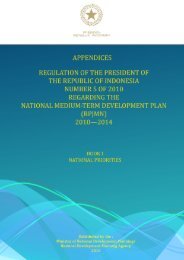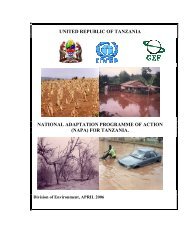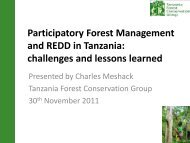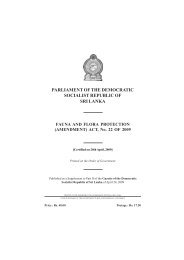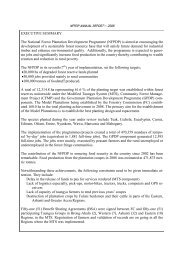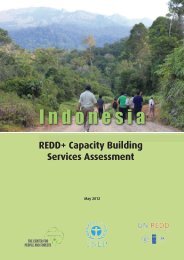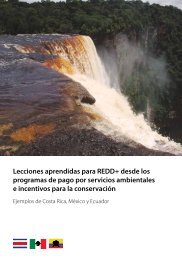PDF - The REDD Desk
PDF - The REDD Desk
PDF - The REDD Desk
You also want an ePaper? Increase the reach of your titles
YUMPU automatically turns print PDFs into web optimized ePapers that Google loves.
9. Crucial Elements of a Functional Registry<br />
It is no secret that critics of <strong>REDD</strong>+ anticipate many short-comings and challenges to its success. Many of the<br />
criticisms are based on the assumption (not necessarily unfounded based on past track records) that transparency,<br />
equity, and environmental integrity will be compromised by governments and entities that lack the capacity or the<br />
will to change the current deforestation/degradation paradigm. As mentioned in the introduction, a <strong>REDD</strong>+ registry<br />
plays an important role in ensuring that the <strong>REDD</strong>+ process is honest, transparent, and efficient, and that it ensures<br />
environmental integrity, accountability, and compliance with requirements and standards. This section looks at these<br />
concepts in greater detail.<br />
Transparency & Efficiency<br />
Across Africa, the forestry sector in many countries has been strongly criticized over the years for a lack of<br />
transparency and efficiency, leading to the prevalence of illegal practices and activities. Given that <strong>REDD</strong>+ is meant to<br />
serve as a large-scale incentive to alter business as usual practices and modes of operation, which have either directly<br />
or indirectly facilitated deforestation and degradation, a transparent and efficient registry system and process is<br />
absolutely essential to building confidence in <strong>REDD</strong>+ efforts and assets. Box 4 highlights critical tenets of a <strong>REDD</strong><br />
registry.<br />
Box 4: Important Tenets of a Transparent, Efficient, and Functional Registry<br />
• Centralized storage of information and tracking<br />
• Platform that is easily accessible by stakeholders and the public<br />
• Low transaction costs, but appropriate fees to ensure serious engagement and sustainability<br />
• Clear guidelines for reporting and registry account management<br />
• Many functions and types of information publically accessible<br />
• Other classified information limited to account holders, regulators, and managers to protect privacy<br />
• Real time record of compliance, performance, unit ownership<br />
• Transaction history available by customer, units and unit balances<br />
• Tracking of co-benefits and safe-guards<br />
• A portal/pathway for lodging grievances, questions, complaints, disputes that are responded to in a<br />
timely manner following established procedures<br />
• Scalable infrastructure can integrate with other registries / outside markets as need evolves<br />
Without a transparent process, critical stakeholders, including donors, investors, or buyers, will lack confidence in the<br />
registry system itself and ultimately in the integrity or value of the <strong>REDD</strong>+ credits (units) evolving out of the system.<br />
As a result, projects could fail if they try to enter the voluntary market and investors and buyers prefer to invest in<br />
other countries.<br />
Environmental Integrity<br />
One of the most important aspects of a registry system is that it guarantees the environmental integrity and validity<br />
of emissions reductions associated with the national or jurisdictional <strong>REDD</strong>+ initiative. Thus, a registry sets up checks<br />
to make sure that the avoided deforestation, avoided degradation or enhancements of carbon stocks that are<br />
projected or reported are accurate. In doing so, a registry greatly reduces the risk of double accounting, either<br />
between projects or between national and sub-national jurisdictions (See Figure 3). It can also serve to assign units<br />
within national <strong>REDD</strong>+ schemes to individual or collective rights holders or beneficiaries, not only reducing project<br />
development transaction costs, but also addressing potential disputes over rights and equity.<br />
14




